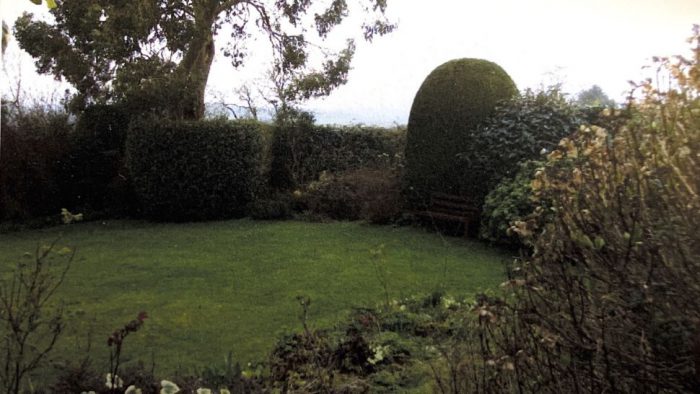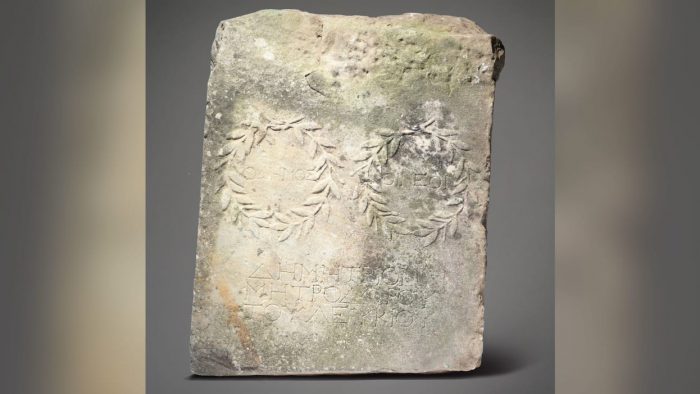"What? That old junk? Oh, I found it in the mud ages ago. It's always been here!"
In backyards and garages and closets around the world, this kind of conversation happens over and over. And you know what? That item often is just some old junk. Except, of course, when it's not.
Such as when it's actually an 1800-year-old Roman artifact!
That was the case for a woman in the English village of Whiteparish. For many years, she had had a valuable Roman marble slab from the second century AD just sitting in her rock garden. In fact, she'd been stepping all over it!
Step into the past

The garden where the rock was found. (Woolley and Wallis)
The woman had been using the rock as a stepping stone for mounting horses. The slab measures about 63 centimetres (25 inches), which made it perfect for the job. Then one day, she noticed the laurels carved into its surface and began wondering exactly what this 'old junk' was.
After contacting experts, she discovered the truth. An archeologist translated the Greek inscription on it (at the time, Greece was a part of the Roman Empire): "the people (and) the Young Men (honor) Demetrios (son) of Metrodoros (the son) of Leukios."
Now the stone is set to be sold off by English auctioneers Woolley and Wallis in February. Its value is estimated at £15,000 (or $26,000 CDN). Not bad for a stepping stone!
How did it get there?
Of course, how such a Roman artifact made it into a peaceful English garden is very curious. The Roman Empire actually extended all the way into England, but this slab was not made there. Instead, it had to have traveled thousands of miles at some point.
In a statement, Will Hobbs, an antique specialist at Woolley and Wallis mentioned that wealthy aristocrats used to take 'Grand Tours' of ancient Greece in the 18th and 19th centuries, and they would often take artifacts home. "We assume that is how it entered the UK," he said, "but what is a complete mystery is how it ended up in a domestic garden."
Whatever the answer, one thing remains true. That given time, the things humans make can end up in some pretty unexpected places. Maybe it's time for you to check your own home for priceless artifacts!
 Dating from the second century AD, this slab was in an English backyard for 20 years. (Woolley and Wallis)
Dating from the second century AD, this slab was in an English backyard for 20 years. (Woolley and Wallis)










srsly